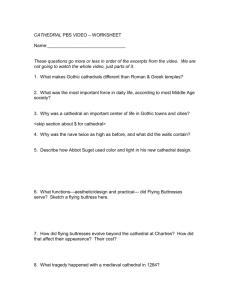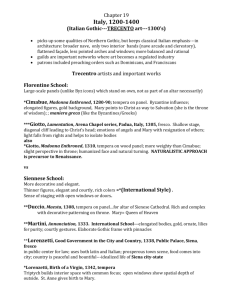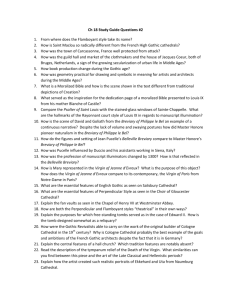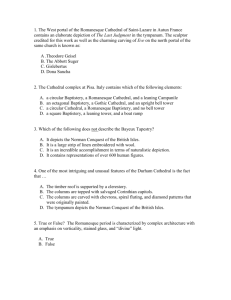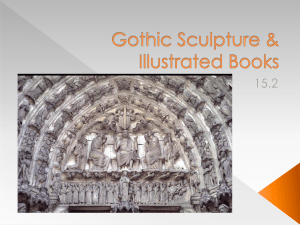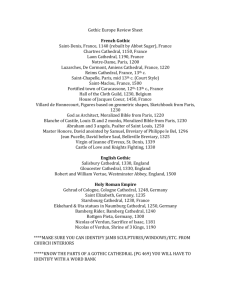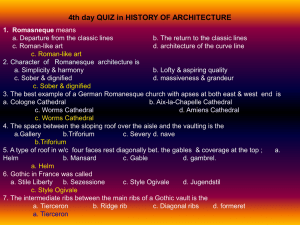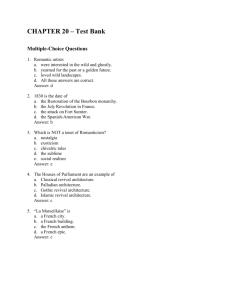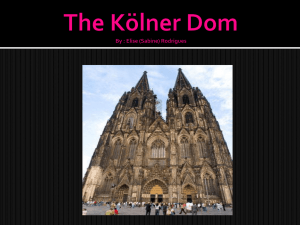GothicRevivalTwo
advertisement
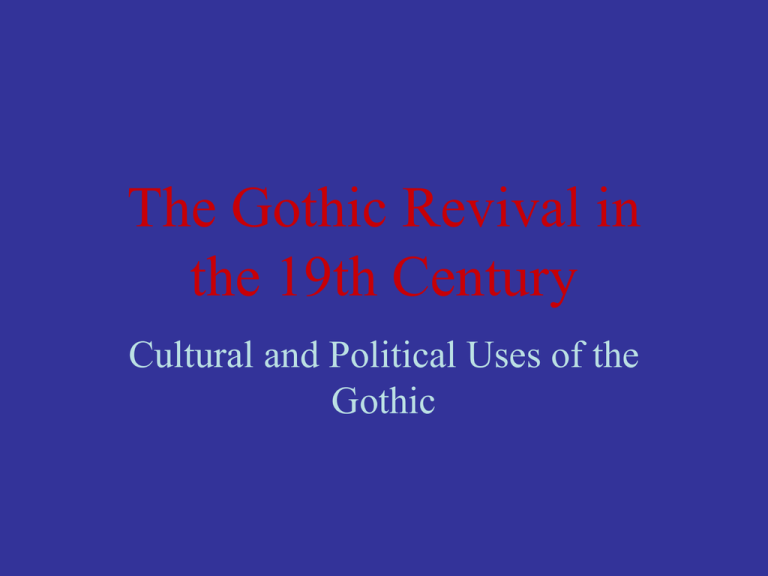
The Gothic Revival in the 19th Century Cultural and Political Uses of the Gothic Cologne Cathedral was begun in the 13th century but left unfinished. The west façade was only partially constructed and the choir had been built from the east only as far as the crossing. The project to restore and complete the cathedral commenced in 1824 under F. A. Ahlert, continued under E. F. Zwirner, and was concluded by Richard Voigtel in 1880. Nave and transepts completed 1824-1880 Nave to east Choir to west The restoration of the Cathedral of Notre-Dame in Paris was undertaken by J.B.A. Lassus and Eugene Emmanuel Violletle-Duc in 1845 and continued by Viollet-le-Duc after the death of Lassus in 1857. Viollet-le-Duc had also restored the Sainte-Chapelle in Paris and designed a new Chapter House for the the Cathedral of NotreDame in 1847. Viollet-le-Duc even undertook the restoration of an entire medieval town of the 12th century: Carcassonne. As was the case in much 19th-century restoration, even careful archaeology did not prevent restorers from making incorrect choices and grave errors. Inadequate understanding of original intentions and principals were amplified by false assumptions and prejudices. J.M.W.Turner: “Burning of the Houses of Parliament” 1835 The Houses of Parliament (Westminster Palace) by Sir James Barry and August W.N. Pugin Design of the throne and canopy for the House of Lords, 1836 All Saints Margaret Street, London, by William Butterfield, 1849-59 St. James-the-Less, London, by George Edmund Street, 1860-61, church and parish house The Albert Memorial, Kensington Gardens, London, by Sir Gilbert Scott, 1863-75 Allegory of Africa by William Theed Royal Courts of Justice, London, by George Edmund Street, 1874-82 Trinity Church, Wall Street, New York, by Richard Upjohn, 1846 is one of several Gothic Revival churches in New York. This example relies on English models, appropriate for the Anglican congregation that the structure houses. St. Patrick’s Cathedral, New York, by James Renwick, 1858-79, located on Fifth Avenue. This is the largest Gothic revival church built in the United States until the project for the Cathedral of St. John the Divine in New York at the turn of the 20th century. St. Patrick’s is a fusion of French and English models but succeeds in producing a strong synthesis. The Gothic Revival became a style of choice for many of the wealthy elite on the east coast. The Vanderbilt family, one of those designated as “robber barons” along with the Rockefellers and Carnegies, engaged Richard Morris Hunt to design their home in New York. It was constructed 1879-80, based on French Gothic chateaux. The Vanderbilt family also commissioned Richard Morris Hunt to design a summer home for them in Asheville, North Carolina, within eyeshot of the Pisga National Forest. Biltmore was constructed on French Gothic models from 1891-95. A special rail line brought the Vanderbilts from New York directly to the estate in Asheville.

